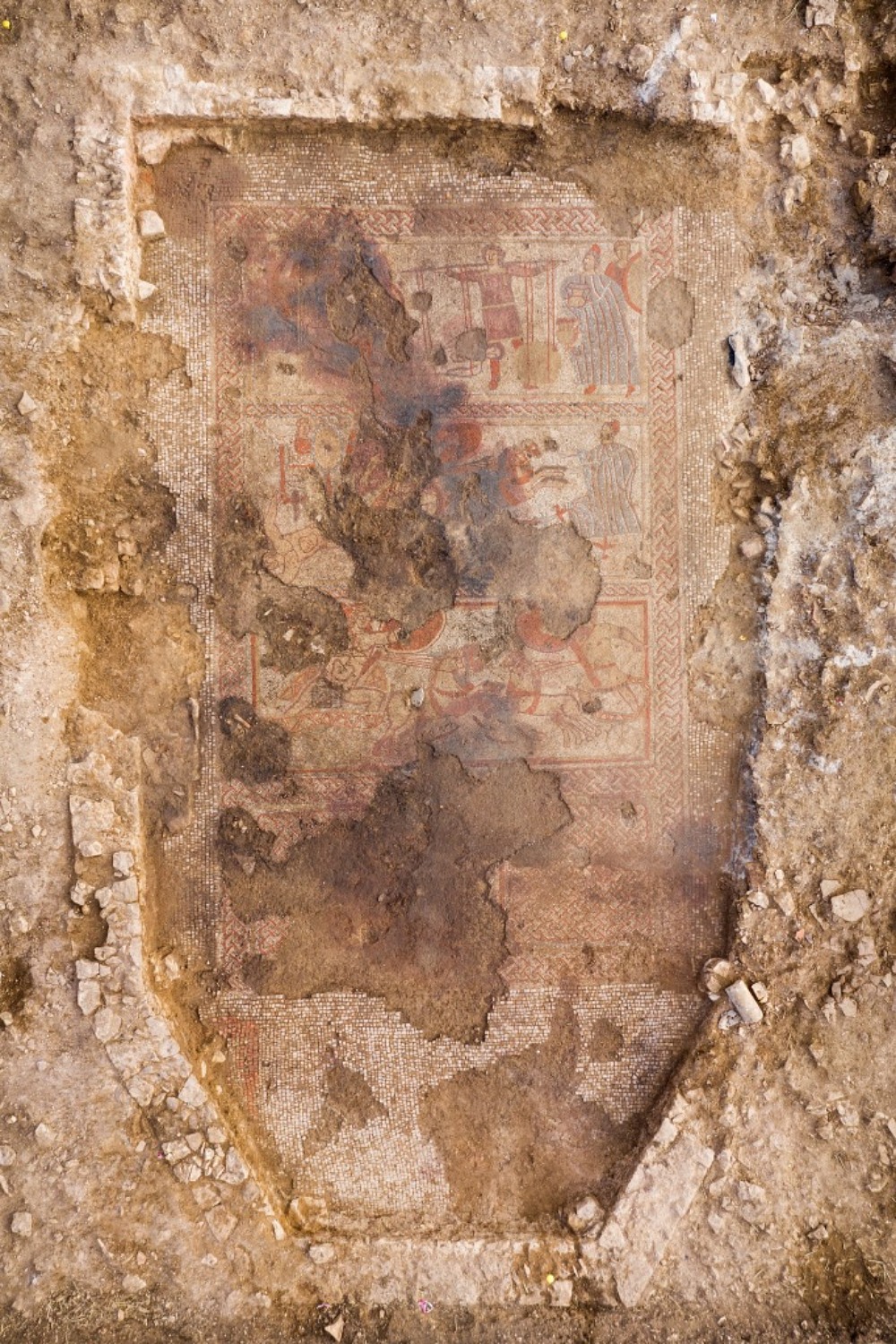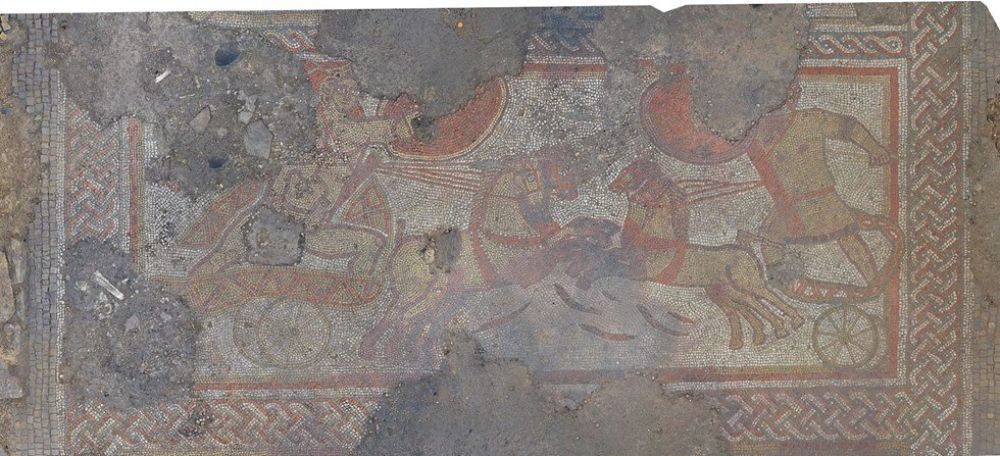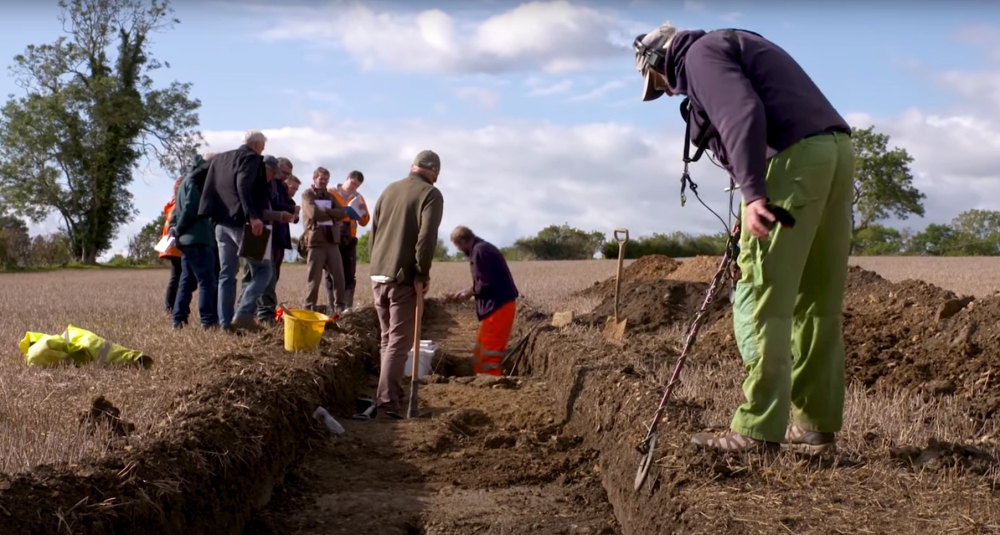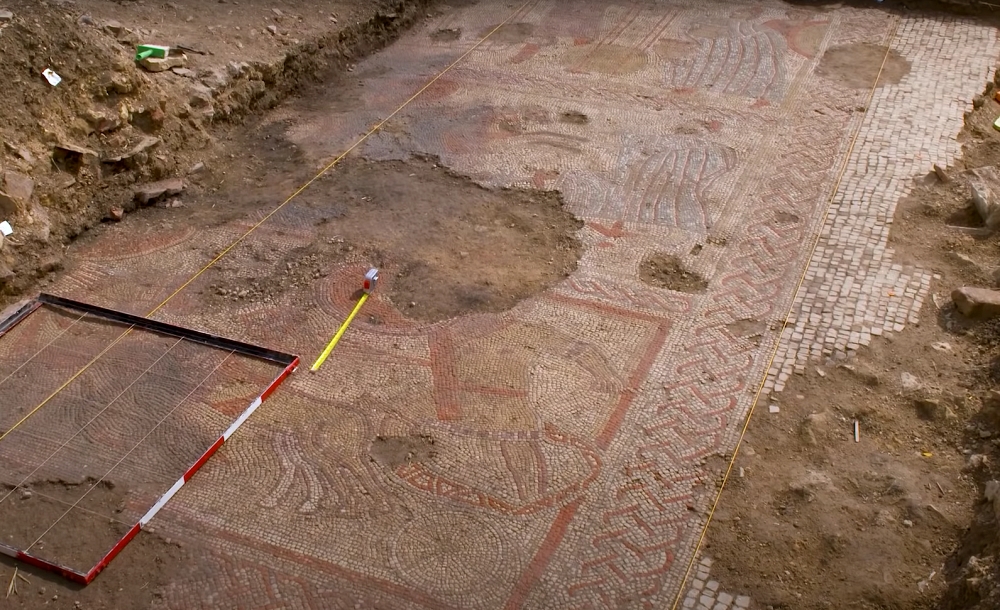Roman Mosaic Discovered By Accident on Rural English Farm
It was all down to the family’s long walks.
The most exciting finds are the ones you weren’t even looking for, but for one English country family this rings especially true now. During lockdown in 2020 Jim Irvine and family began taking long walks on their country property to ease the boredom of being cooped up inside. His father, Brian Naylor, owns the land situated in Rutland County. While on these walks Irvine began to noticed some pottery shards on the ground and began to wonder what life the land had experienced before his family. He then looked at satellite images of the land online and noticed a distinct line around the field where the pottery was found.

In an interview Irvine said that the moment he saw the difference of color of this area he knew something special was probably under the grass. He and his father soon after went out to the field and began carefully digging. Within only a few hours he knew he had to call authorities over this huge find. An archaeological dig was then undertaken through the University of Leicester Archaeological Services in partnership with the Leicestershire County Council. Once the significance of the find was known funding for the 2020 dig was provided by Historic England, a branch of the British government involved in uncovering and preserving English history.
What archaeologists found is actually huge mosaic mural dating back to the time of Roman occupation. The Roman Empire was not terribly long-lived in England and so Roman artifacts from the area are very rare. Villas and mosaics are even rarer.

As it turns out this mosaic measures roughly 12 yards by 7 yards. The hexagonal shape features larger mosaic panels of equal size showing two well-known players in Roman mythology. In Homer’s Iliad the characters battle to the death in the war between the Romans and the Trojans.
The scenes read like a comic strip with the bottom strips read first showing in tiny tiles how Achilles and Hector duel in chariots in an action-packed piece of artwork rendered in shades of blue, red, gold, and white. The next scene shows Achilles dragging Hector’s lifeless body behind his chariot and the final scene shows Achilles returning the body to Hector’s family in exchange for his weight in gold. Between the scenes and around the edges are spectacular braided motifs.

Also uncovered by researchers at the site are barns, out buildings, and a bath house separated by shallow ditches. The entire site taken together reveals that it was the villa of someone quite wealthy.
It is believed that the Roman villa dates to the 3rd or 4th century CE. Analysis of the tiles showed fire damage and breakage, signs that the site was most likely repurposed before eventually being covered over with dirt and then grass. Human remains from the Anglo-Saxon period were also found at the site. Excavation at the site continued into 2021 with additional funding from the University of Leicestershire School of Archaeology and Ancient History.
The site has been worked on by archaeology students, but Irvine continued to also excavate in collaboration with the team of experts in 2021. Due to the rarity and the great condition of the site it has been declared a scheduled monument. This means that the site will be protected going forward and that any changes that might affect the site will have to be approved by the Secretary of State.
Since the excavations in 2020 and 2021 the site has now been back-filled to protect it from damage in the future.

You can see more of this beautiful mosaic in the video below.
SKM: below-content placeholderWhizzco for DOT

